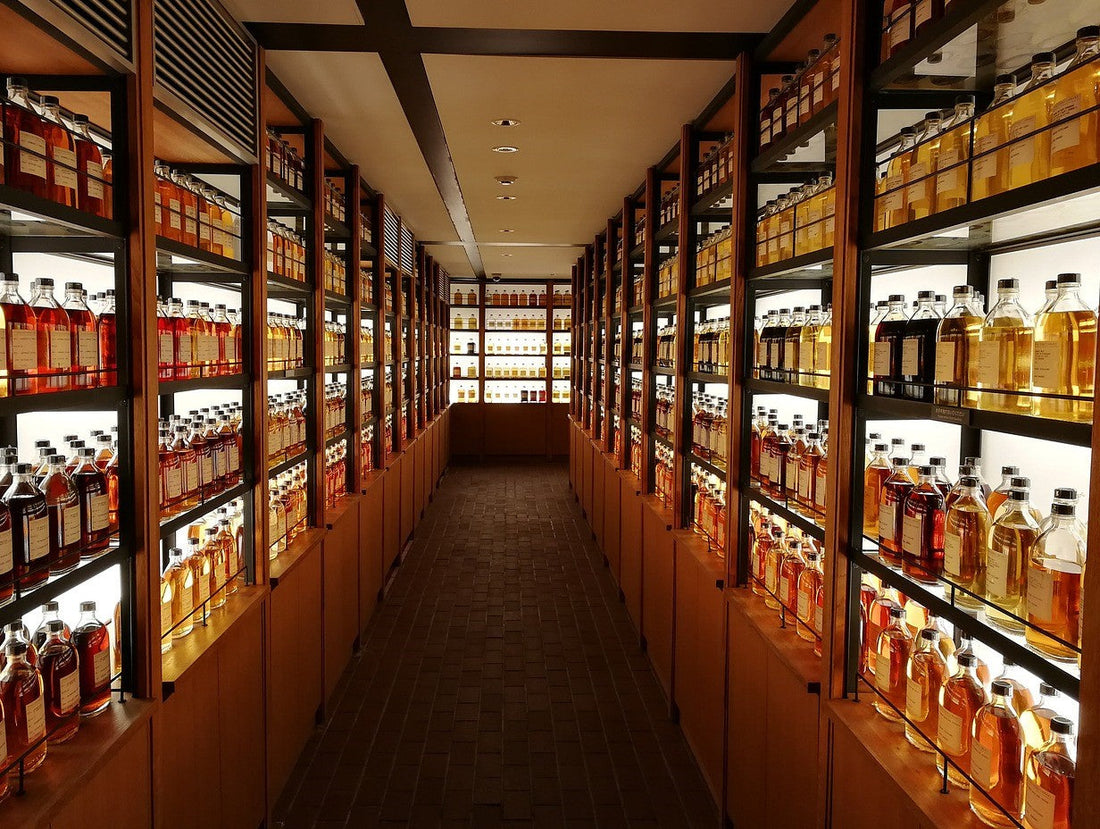Whisky is one of the world’s most beloved spirits, known for its complexity, rich flavors, and deep heritage. But if you've ever browsed a whisky shop or restaurant menu, you might have noticed that good whisky often comes with a hefty price tag. Some bottles cost hundreds or even thousands of euros, leaving many people wondering: Why Does Whisky Cost So Much?
The high cost of whisky is not just a matter of branding or luxury appeal. There are several factors that contribute to its price, from production and aging to rarity and demand. In this article, we’ll break down exactly why whisky can be so costly and what justifies its price.
1. The Cost of Production
Making whisky is an intricate process that involves high-quality ingredients, time-consuming methods, and expensive equipment. Unlike many spirits, whisky is not something that can be mass-produced overnight.
A. Quality Ingredients
Whisky is made from natural raw materials—primarily grains (barley, corn, rye, or wheat), water, and yeast. The quality of these ingredients significantly affects the final product. Many high-end whiskies use the best locally sourced grains and pure water from natural springs, adding to the production cost.
B. Distillation Process
The distillation process requires significant energy and specialized copper stills, which are expensive to manufacture and maintain. Many distilleries use traditional pot stills rather than cheaper continuous column stills, which adds to the cost but results in a more refined product.
C. Oak Barrels
Unlike vodka or gin, whisky must be aged in oak barrels, often for years or even decades. These barrels are not cheap—many are made from American white oak or European oak, which can cost hundreds of dollars each. Some premium whiskies are aged in rare sherry, wine, or rum casks, adding another layer of expense.
2. The Time Factor: Aging & Storage Costs
One of the biggest reasons whisky is expensive is time. A whisky aged for 12, 18, or even 30 years has been sitting in a warehouse, taking up space, and slowly evaporating a process known as the "Angel’s Share".
A. Long Aging Periods
Unlike spirits like gin or vodka, which can be bottled and sold immediately, whisky must be aged for years before it reaches its peak flavour. During this time, the whisky interacts with the wood, absorbing flavours and developing complexity.
For a bottle of 25-year-old whisky, that means the distillery has been waiting a quarter of a century before they can sell it! That’s a lot of time and storage costs to cover.
B. Evaporation Loss ("Angel’s Share")
As whisky ages, some of it evaporates through the wooden barrel. In Scotland, for example, whisky loses about 2% of its volume per year due to evaporation. Over 20 years, this could mean that up to 40% of the original whisky is lost before it’s even bottled.
This means that older whiskies are naturally rarer and more expensive—less whisky survives to be sold, and the cost must be spread across fewer bottles.
C. Warehouse Storage & Maintenance
Distilleries must store thousands of barrels for years, paying for warehouse space, security, and temperature control. The longer the whisky ages, the more it costs the distillery to maintain it.
3. Taxes & Regulations
A. Excise Duties & Taxes
Whisky is heavily taxed in many countries. In the UK, for example, alcohol duty adds a significant cost to every bottle of whisky. Import taxes also drive up the price when whisky is sold internationally.
B. Strict Regulations
Whisky production is governed by strict regulations, which vary by country. For example:
- Scotch whisky must be aged for a minimum of three years in oak barrels.
- Bourbon must be made with at least 51% corn and aged in new charred oak barrels.
- Japanese whisky must follow production methods similar to Scotch.
These regulations ensure quality but also increase production costs.
4. Branding, Rarity & Limited Editions
A. Prestige & Reputation
Some whisky brands, such as Macallan, Glenfiddich, and Yamazaki, have built a strong reputation over decades (or centuries). Consumers are willing to pay a premium for trusted brands with a history of producing high-quality whisky.
B. Limited Editions & Collector’s Market
Many distilleries release limited-edition whiskies, which are highly sought after by collectors. Since these whiskies are produced in small batches, they are naturally more expensive.
For example, a bottle of Macallan 1926 Fine & Rare sold for over $1.9 million at auction in 2019! Even limited releases that aren’t as rare can cost hundreds or thousands of euros.
C. Whisky Auctions & Investment Market
Whisky has become an investment asset, with rare bottles increasing in value over time. Collectors and investors buy bottles hoping to sell them at a higher price later, driving up demand and prices.
5. Packaging & Marketing Costs
A. Premium Packaging
High-end whiskies often come in luxurious packaging—handcrafted glass bottles, wooden presentation boxes, wax seals, and gold-embossed labels. While this doesn’t affect the whisky’s taste, it adds to the production cost.
B. Global Marketing & Branding
Big whisky brands invest heavily in marketing, from international ad campaigns to sponsorships and exclusive tasting events. These costs are factored into the price of every bottle.
6. The Impact of Supply & Demand
A. Growing Global Demand
Whisky is more popular than ever, especially in markets like China, India, and the US. As demand grows, the supply of aged whisky struggles to keep up, pushing prices higher.
B. Craft Distilleries & Small Batch Production
The rise of craft whisky distilleries has also led to higher prices. Smaller producers don’t have the economies of scale of big brands, meaning they must charge more per bottle to stay profitable.
Is Expensive Whisky Always Better?
Not necessarily! While older and rarer whiskies tend to have more complexity, that doesn’t mean they are always better than younger or more affordable options. Some excellent whiskies cost under $50, while some luxury releases are overpriced due to branding or hype.
The best whisky is the one that you enjoy drinking—whether it’s a $30 bottle or a $300 bottle.
Conclusion: Why Whisky Is Expensive
Whisky’s high price is justified by a combination of costly production, long aging periods, high taxes, limited supply, and increasing global demand. From the ingredients and distillation process to storage, packaging, and marketing, every step in whisky-making adds to its value.
Next time you enjoy a glass of whisky, take a moment to appreciate the craftsmanship, time, and effort that went into making it. Whether it’s an affordable dram or a rare collector’s bottle, every sip tells a story of patience, tradition, and passion.
Looking to explore whisky? Check out our Whisky Tasting Gift Box and discover premium selections at great value!

